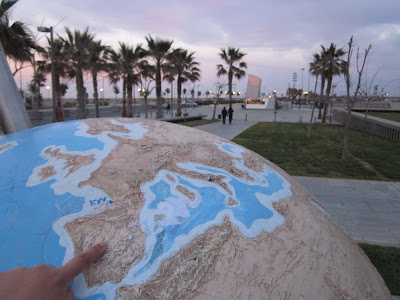Madrid starts coming to life after Easter. All over the city, waiters are busy putting out the tables and chairs at the pavement cafés, getting ready for the never ending demand for cold drinks. Afternoons slip by over languid lunches in shady squares, while when the heat is really on, in July and August, the locals lie low until well after dusk, then emerge in their thousands to share some tapas and a bottle of wine at a terraza table.
From May onward the cultural festivals come thick and fast, with concerts and theater in outdoor venues. At the height of summer, fiestas turn the most traditional downtown neighborhoods into one long open-air party.
From May onward the cultural festivals come thick and fast, with concerts and theater in outdoor venues. At the height of summer, fiestas turn the most traditional downtown neighborhoods into one long open-air party.
| Top sights YOU must to visit in Madrid |
You could spend weeks just visiting the three big-hitter museums, but there are plenty of lesser-known places that are well worth visiting too. That said, even the best-laid plans tend to get forgotten after a couple of days as you slip into the swing of the city.
Prado Museum
One of the greatest museums in the world, the Prado displays superb works by Spanish masters such as Velázquez, El Greco and Goya, but has wonderful Italian and Flemish collections, too, with paintings by Raphael, Titian and Tintoretto, Bosch and Rubens. There are usually at least two temporary exhibitions running as well.
Reina Sofía Museum
 The rehang of the permanent collections at the Reina Sofía modern art museum was completed in late 2010, with new displays on the fourth floor. Picasso’s masterpiece Guernica attracts the biggest crowds, but don’t miss the excellent works by Dalí, Miró and Tàpies.
The rehang of the permanent collections at the Reina Sofía modern art museum was completed in late 2010, with new displays on the fourth floor. Picasso’s masterpiece Guernica attracts the biggest crowds, but don’t miss the excellent works by Dalí, Miró and Tàpies.Thyssen-Bornemisza Museum
Superlative collections of Western art from the 13th century to the present day, built up by the Thyssen-Bornemisza family and housed in a neo-classical palace. Highlights include paintings by Dürer, Titian, Raphael, Degas and Kandinsky, and there is usually at least one temporary exhibition running.
Royal Palace
The opulent 18th-century palace stands on a strategic site with views across the countryside. Used for official events, it is crammed with paintings, sculptures, tapestries and antiques. You can also visit the Royal Pharmacy, the Royal Armoury and the Sabatini and Puerta del Moro gardens.
Real Madrid Bernabeu Stadium
Walk down the players’ tunnel and out on to the pitch, visit the Presidential Box and have a look at all those trophies up close. Madridistas big and small will be in heaven here.
Retiro Park
 |
Plaza Mayor and Los Austrias
 Get a flavour of Madrid’s history in the Plaza Mayor, which dates back to the 17th century and is framed by red-brick buildings and slate turrets. Then wander along to the Plaza de la Villa, the oldest square in Madrid. Walk down to Cava Baja, which traces the line of the old city wall and is now lined with tapas bars. Then go past San Andrés church and through to Plaza de la Paja, where the medieval atmosphere contrasts with the lively vibe at the pavement cafés.
Get a flavour of Madrid’s history in the Plaza Mayor, which dates back to the 17th century and is framed by red-brick buildings and slate turrets. Then wander along to the Plaza de la Villa, the oldest square in Madrid. Walk down to Cava Baja, which traces the line of the old city wall and is now lined with tapas bars. Then go past San Andrés church and through to Plaza de la Paja, where the medieval atmosphere contrasts with the lively vibe at the pavement cafés.
San Fernando Royal Academy of Fine Arts Museum
This museum is never crowded, despite being situated just off the Puerta del Sol. Housed in an elegant 18th-century building, it contains a fine collection of paintings by Goya, El Greco, Zurbaran, Picasso, Van Dyck, Tiepolo and other major artists. You may well have the whole place to yourself.
Debod Temple
 More than 2,000 years old, this Egyptian temple was given to Spain in thanks after Spanish archaeologists helped save Abu Simbel from flooding when the Aswan Dam was built. It stands on the western edge of the city centre and is a romantic spot to watch the sun go down.
More than 2,000 years old, this Egyptian temple was given to Spain in thanks after Spanish archaeologists helped save Abu Simbel from flooding when the Aswan Dam was built. It stands on the western edge of the city centre and is a romantic spot to watch the sun go down.








